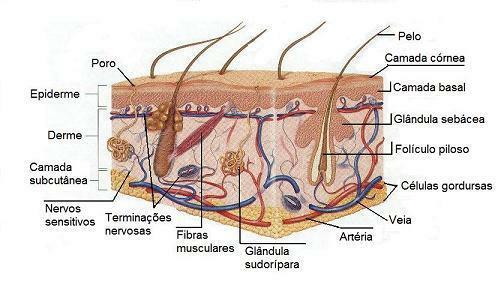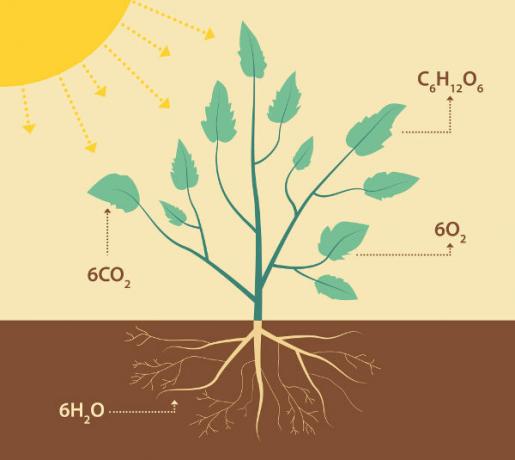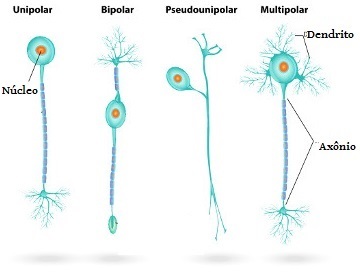The dermis or corium is one of the layers of the skin, formed by connective tissue and located below the epidermis and above the hypodermis. Thus, it is the middle and thickest layer of the skin.
The dermis has a variable thickness depending on the region of the body and the age of the individual.
Its function is to ensure the skin's elasticity and resistance. As it is a richly vascularized region, it is also responsible for the nutrition and oxygenation of the epidermis.
Composition

In the dermis there are also lymphatic vessels, glands, hair follicles and nerves that provide the sensation of touch, pain, pressure and temperature.
The number of nerve endings in the dermis varies depending on the region of the body, so some areas are more sensitive than others.
Structurally, the dermis is made up of collagen and elastin fibers and an extracellular matrix. Collagen fibers can reach up to 70% of the dry weight of the dermis.
The main type of cell present is the fibroblast, responsible for the production of the most important elements of the dermis, such as fibers and the amorphous substance. In smaller quantities, macrophages and mast cells can also be found.
Layers
The dermis is formed by two layers:
papillary layer
The papillary layer is the upper layer of the dermis, being formed by connective tissue loose. It gets this name because it has finger-like regions or papillae at its ends, which communicate with the epidermis.
In the papillary layer we find capillaries, elastic fibers, reticular fibers and collagen.
reticular layer
The reticular layer is the deepest layer of the dermis, formed by dense, unshaped connective tissue. In it we find blood capillaries, elastic and collagen fibers, fibroblasts, lymphatic vessels and nerve endings.
Dermis and Epidermis
THE epidermis it is the most superficial layer of the skin, in contact with the environment. The dermis can be up to 40 times thicker than the epidermis.
While the dermis ensures the skin's elasticity and resistance, the epidermis acts as a protective barrier for the body.
Learn more, read also:
- Integumentary system
- hypodermis
- Animal Skin, Hoofs, Horns and Claws


